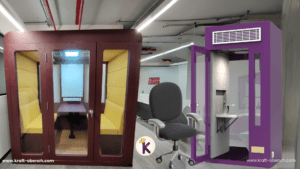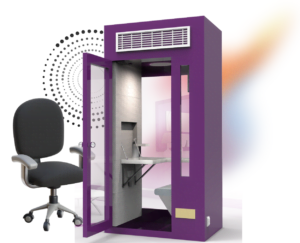The Covid-19 pandemic caused a major transformation in the global work economy in 2020. Working from home used to be a privilege reserved for a select few companies, but it has now become the standard for the majority. 70%-80% of the workforce will be working remotely at least five days a month by 2025, according to predictions. For the past five years, a growing number of engineers, designers, and experts have said that remote work is the way of the future. So, the concern is whether employees and employers will return to office – and, if so, when and how often? Is it possible to work in a hybrid mode?
According to a survey, in the coming few years working from home would be doubled as of now. In our previous blogs, we have shared about Why Work from Home and How is it better.
Work From Home- A Permanent Option
“The productivity statistic is indicating that remote work is functioning,” according to an analysis by Enterprise Technology Research (ETR). It was discovered that when the Covid-19 situation is resolved, more than two-thirds of companies (74 percent) want to permanently move staff to remote work. Amazon, Tech Mahindra, HCL, PWC, Trigent, Flipkart, Siemens, Deloitte, Oracle, Zensar, TCS, Capgemini, and others are among the organizations offering both temporary and permanent remote work.
Working from home requires less office space
Many businesses are also considering combining remote and on-site labor, resulting in a hybrid work style. By eliminating cubicles and introducing more collaborative meeting areas, the office might be remodeled and restructured. And here Kraft-Obench has introduced Wofrho! Which means Work From home office spaces with all the facilities inherited in a product itself which not only gives us privacy but also other luxury amenities which can be installed in your home itself.
Increase of Productivity
The way we work will alter as a result of remote work. It would enable individuals from all around India to effectively interact together. Organizations have increasingly placed an emphasis on results rather than hours spent, necessitating the use of tools and applications to oversee remote employee performance. Employers will require visibility into what employees are doing in order to enhance staff efficiency.
The Hybrid approach will continue in the future since it is widely accepted by employers throughout the world. Transactional desk activities, such as typical customer conversations, may be done on call, but if a new project or process implementation requires employees to engage with numerous teams, a hybrid workplace will be the new normal!
Benefits of remote working for organisations and employers
A broader range of recruitment
Many companies prefer to hire individuals who live in the same city.
They can, however, spread their recruitment to different cities given the existing remote working environment. This can naturally assist businesses in tapping into areas they might otherwise neglect.
Increased employee retention
Employee satisfaction is one of the advantages of working from home. Employees who used to commute to work are relieved that they no longer have to. Work flexibility and independence also contribute to employee job happiness. Employees, understandably, prefer to stay with companies where they are satisfied, resulting in increased staff retention.
Cost savings
During normal times, corporations had to pay for things like energy, rent, elevator and security system upkeep, and so on, in addition to paying their staff. As a result, one of the key advantages of working from home that businesses have reaped is a reduction in unnecessary costs.
Leaves are being reduced.
Another advantage of remote working is that employee leave is reduced. Employees are lot more relaxed and less worried and fatigued now that everyone is back at home with their families and no longer has to go to work. Furthermore, with job flexibility being a significant work from home advantage, individuals can work on a schedule that is most convenient for them. As a result, they take fewer leaves.
Conclusion
WFH is more environmentally friendly. Employees can work from home if they have a reliable Internet connection and a flexible schedule.
Working from home is a less stressful approach to get things done. It is a far more efficient manner of working since employees can simply move between work and personal life while still completing their tasks on time. It also means that staff may work from home, saving money on travel expenses to and from the workplace.








